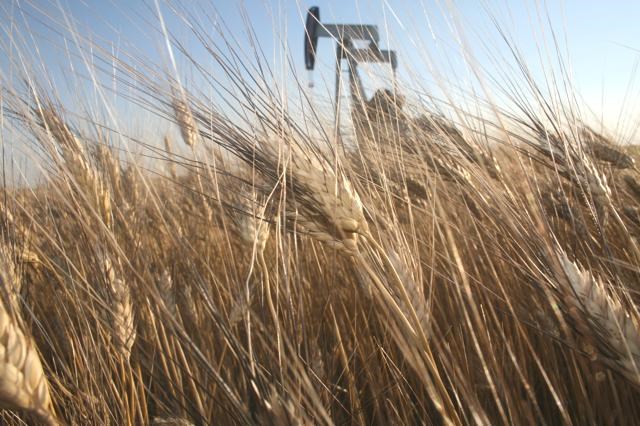Many Saskatchewan producers wrapped up harvest this past week thanks to some relatively warm and dry weather. Saskatchewan Agriculture reported that 94 per cent of the crop is now in the bin for the week ending October 9. This number jumped from 89 per cent reported the previous week. Harvest progress remains ahead of the five-year average of 90 per cent for this time of year. Last year, heavy rain and snow had halted harvest progress for most of the province allowing only 81 per cent of the crop to be combined. Fields were saturated in 2016 and it would be some time before most producers could continue with harvest.
This year, most producers with crop remaining in the field have indicated that they only need another week or two of ideal weather to complete harvest. Much of the crop in the last few weeks has come off tough and been placed in aeration bins.
Harvest is essentially complete in the southwestern region as 99 per cent of the crop is now combined. The southeastern and west-central regions have 97 per cent combined, while the east-central and northeastern regions have 92 per cent. The northwestern region has 87 per cent combined.
Winter wheat, fall rye, lentils and peas are 100 per cent completed, while 99 per cent of chickpeas, 98 per cent of mustard, 97 per cent of durum, 96 per cent of barley, 95 of spring wheat, 94 per cent of canaryseed, 93 per cent of canola, 92 per cent of oats, 80 per cent of soybeans, and 79 per cent of the flax have now been combined.
Most of the province received little to no moisture last week, although the Foam Lake area reported 43 mm of precipitation. Topsoil moisture conditions remain relatively unchanged from last week. Significant amounts of moisture will be needed to replenish both the topsoil and subsoil for next spring. Across the province, topsoil moisture on cropland is rated as four per cent surplus, 40 per cent adequate, 44 per cent short and 12 per cent very short.
Hay land and pasture topsoil moisture is rated as two per cent surplus, 31 per cent adequate, 45 per cent short and 22 per cent very short. At this time, most livestock producers have indicated having adequate supplies of hay, straw, greenfeed and feed grain heading into winter. However, producers in southern regions are reporting that many areas will have inadequate feed and that shortages are likely.
Most crop damage this reporting week was due to frost, lack of moisture, strong winds and wildlife such as geese and deer. Saskatchewan producers are busy combining, completing fall work and moving cattle. SaskPower received three reports last week of farm machinery coming into contact with electrical equipment, totaling 34 since September 1.
小蓝视频western Saskatchewan has essentially completed the harvest with 99 per cent of the crop in the bin. This is up from 98 per cent the previous week and well ahead of the five-year average of 94 per cent for this time of year. The Coronach, Assiniboia and Ogema areas are 98 per cent completed combining. The Gravelbourg, Mossbank, Mortlach and Central Butte areas have 99 per cent of the combining completed. The Kyle, Swift Current, Shaunavon and Ponteix areas are 98-99 per cent completed the harvest. The Consul, Maple Creek and Leader areas have combining 99 per cent completed. Some producers are waiting on crops such as flax and soybean to dry down.
Small amounts of rain were received in much of the region, although the Climax area reported 26 mm. The Morse area has reported the most precipitation (244 mm) in the region since April 1.
Topsoil moisture conditions remain about the same as the previous week. Significant moisture will be needed to replenish both the topsoil and the subsoil before next spring. Topsoil moisture on cropland is rated as 20 per cent adequate, 58 per cent short and 22 per cent very short. Hay land and pasture topsoil moisture is rated as 25 per cent adequate, 32 per cent short and 43 per cent very short.
Livestock producers have indicated that, while most in the region have adequate hay, straw, greenfeed and feed grain heading into winter, some will have inadequate feed. Shortages are very likely in many areas of the region. Some producers have also begun shipping cattle.
The majority of crop damage this week is due to frost, lack of moisture and wildlife such as geese and deer. Producers are busy finishing harvest, moving cattle and completing fall work.




